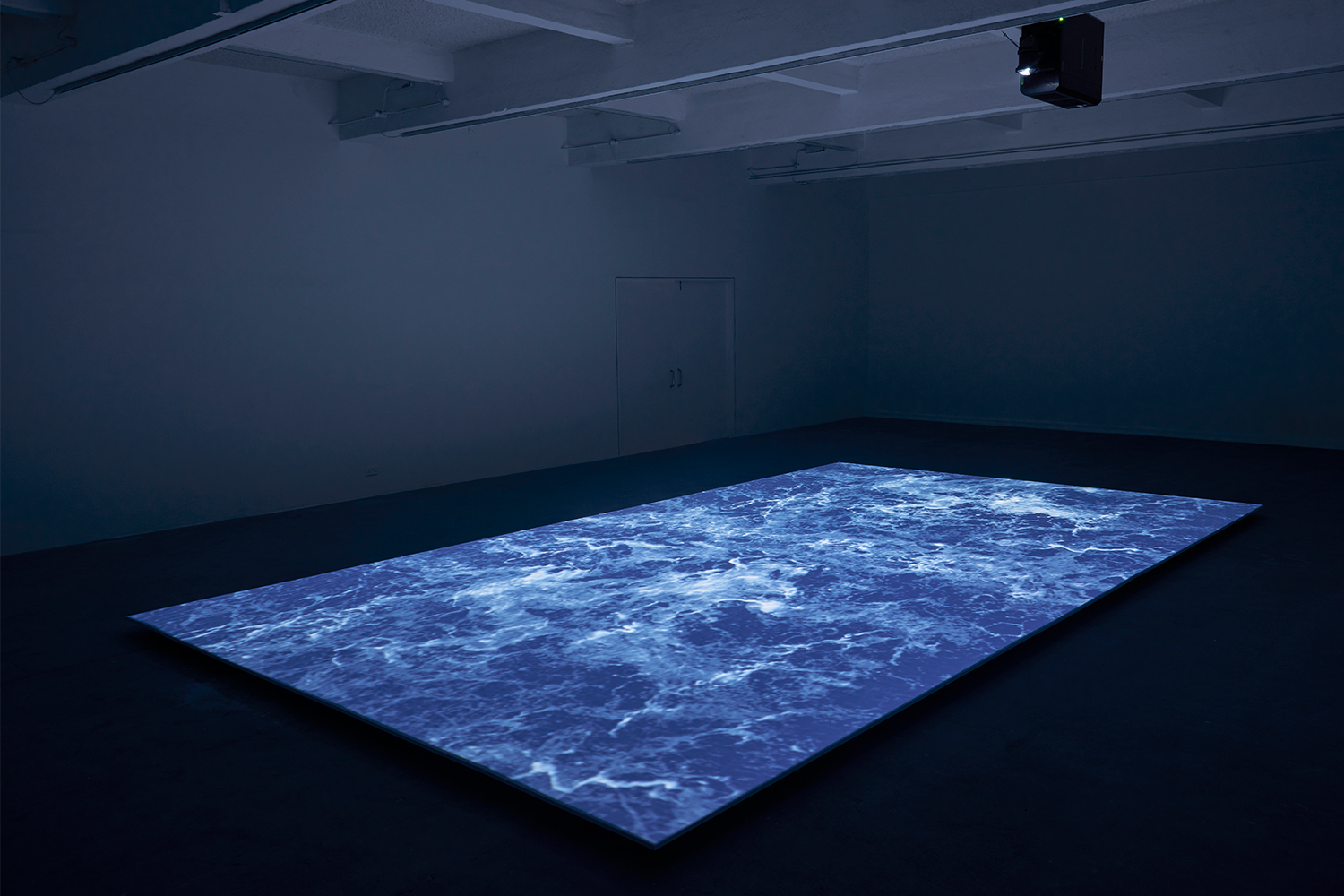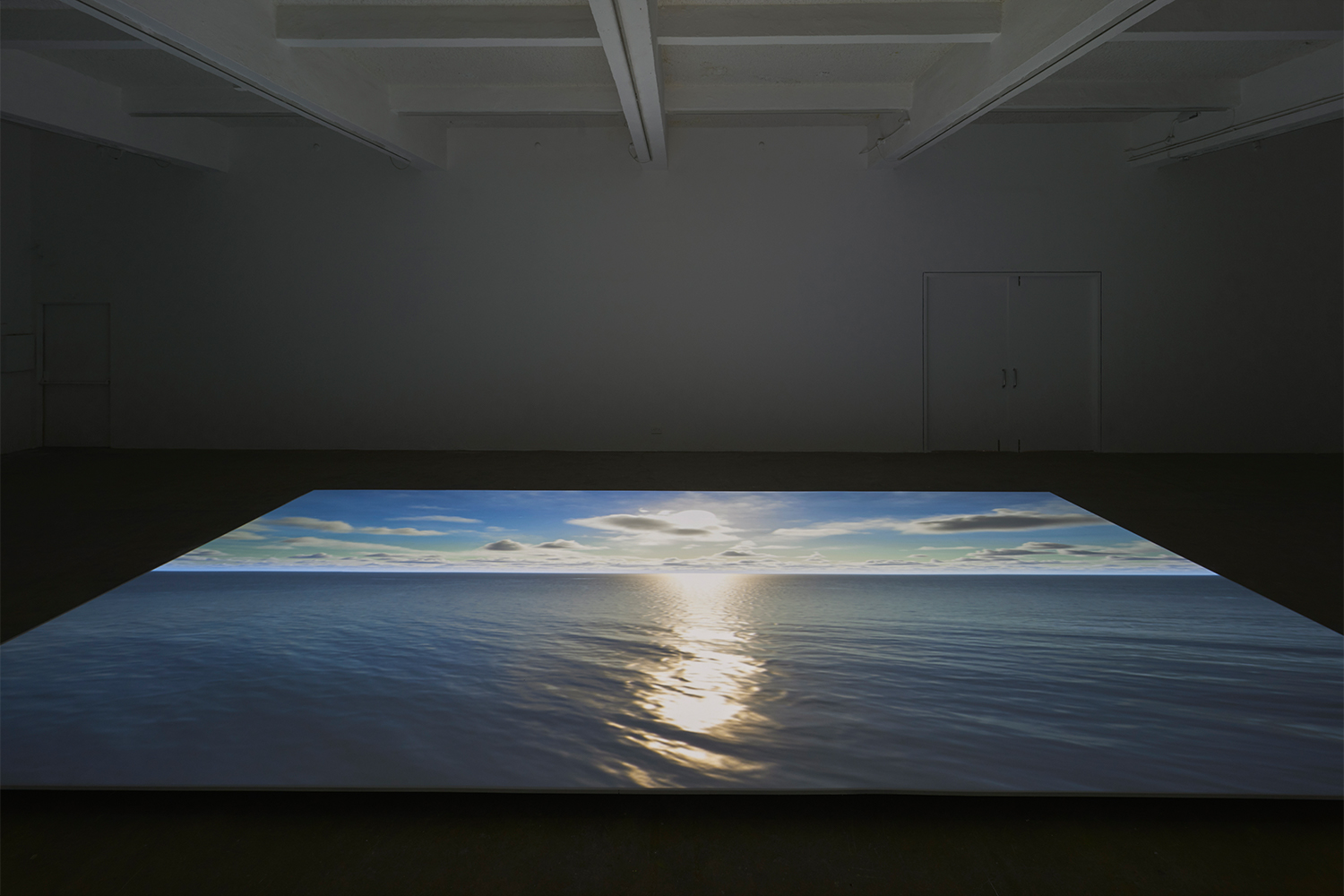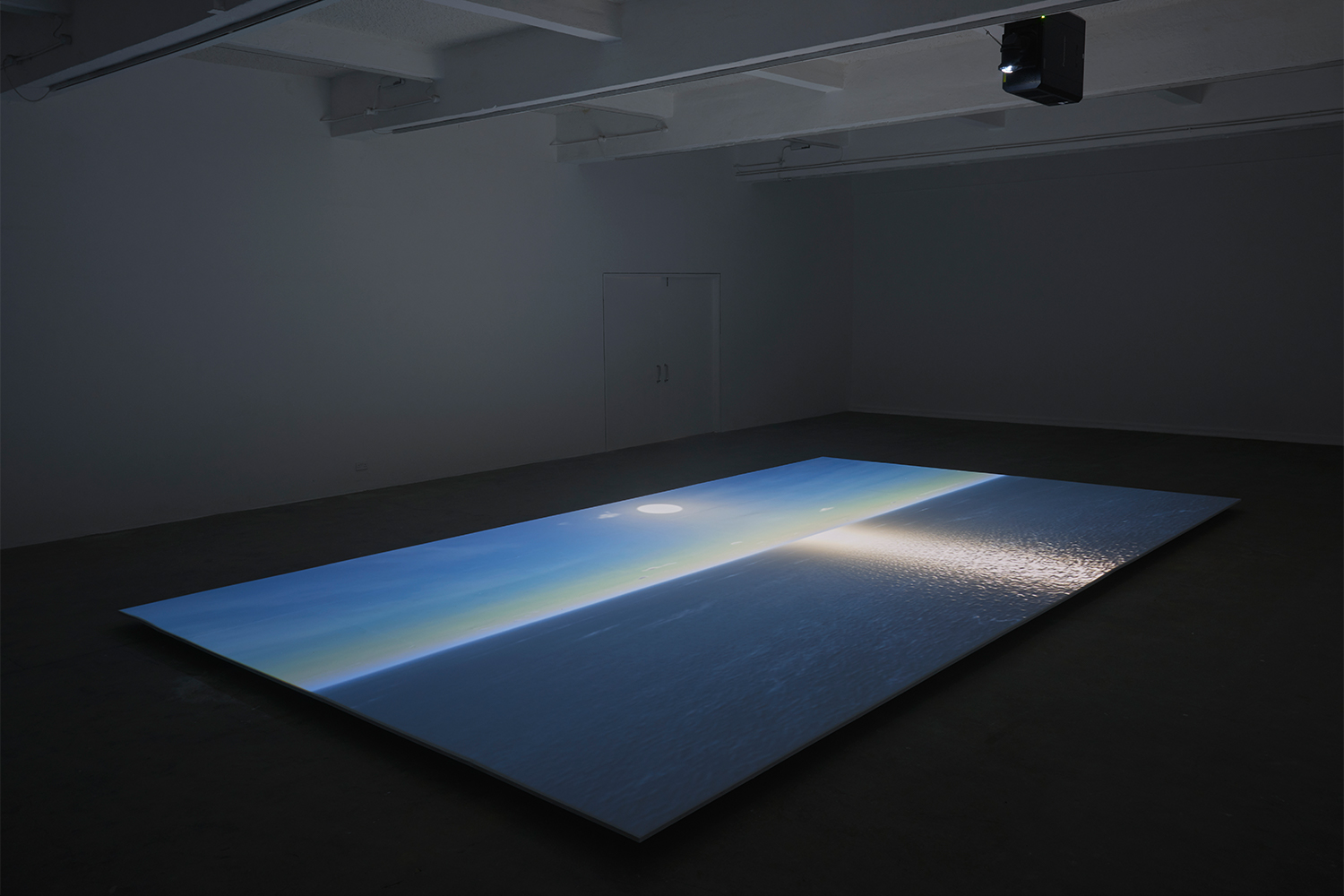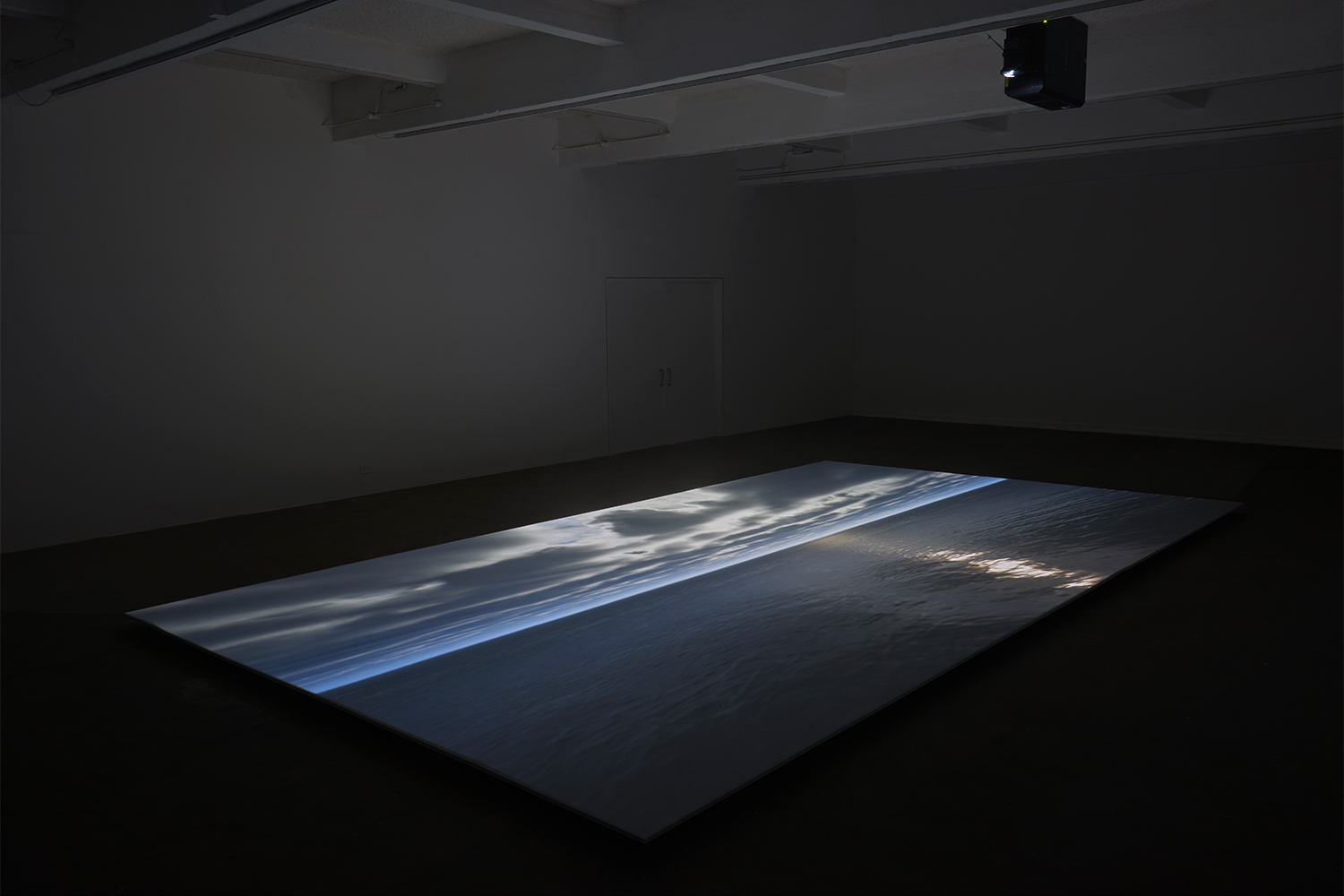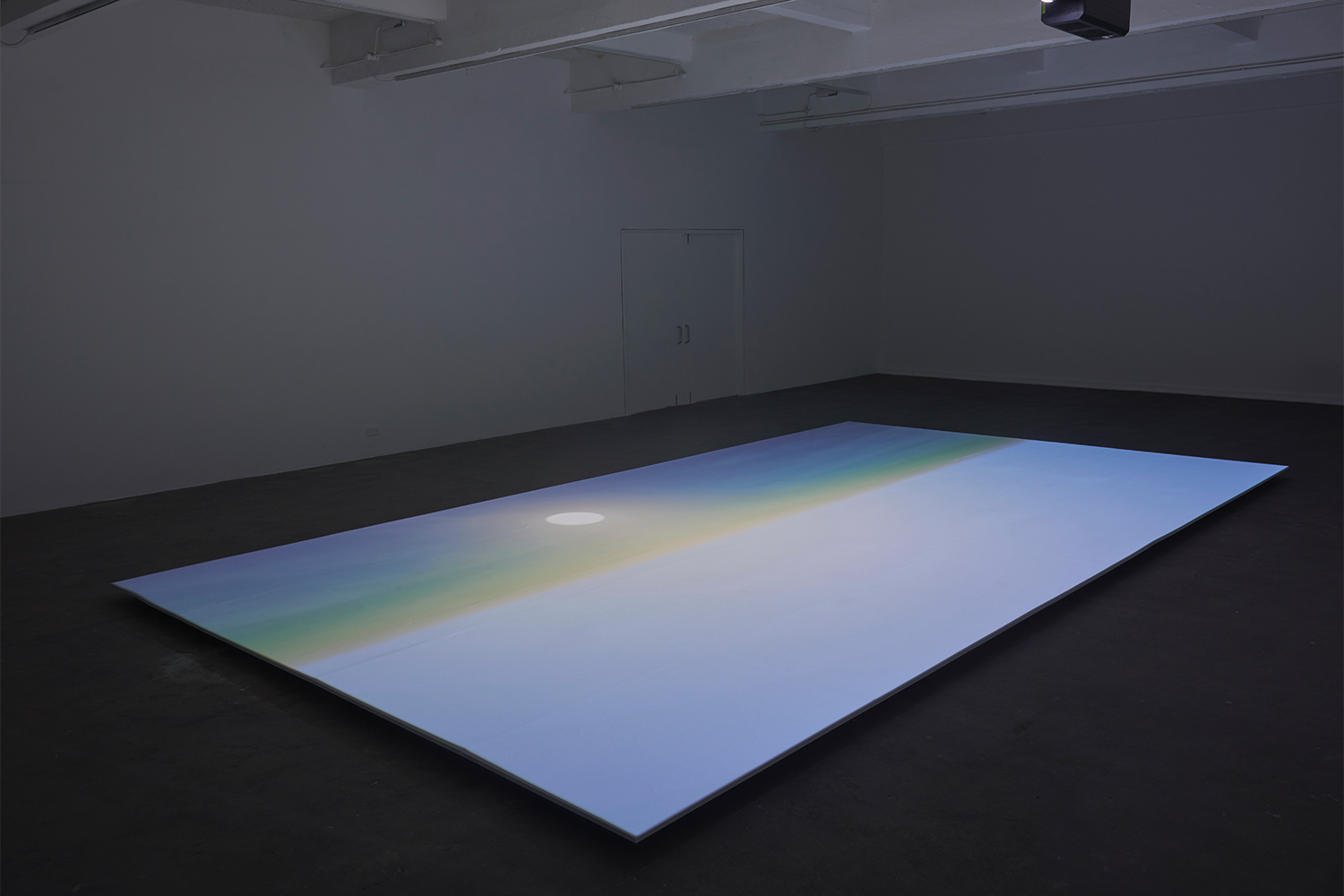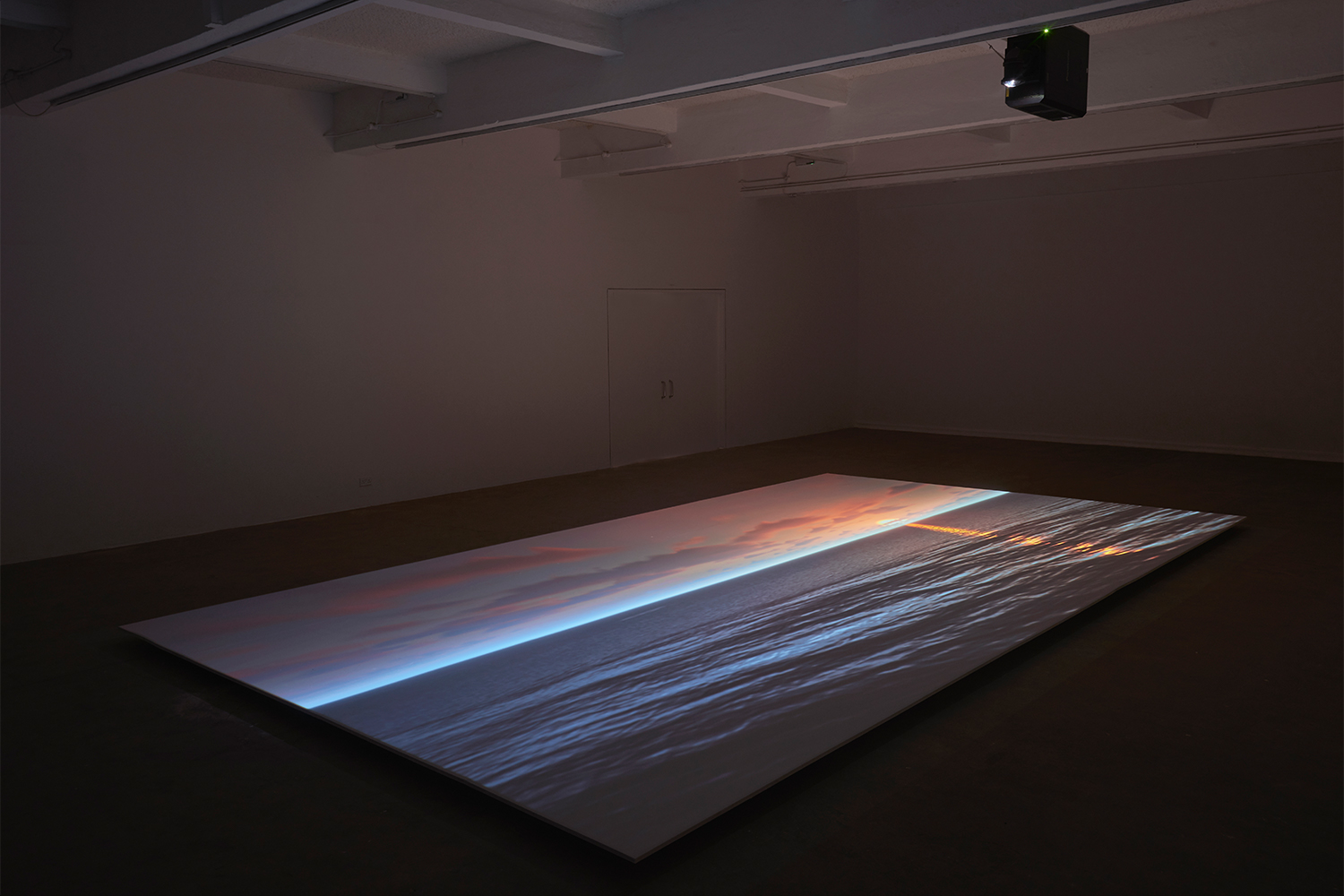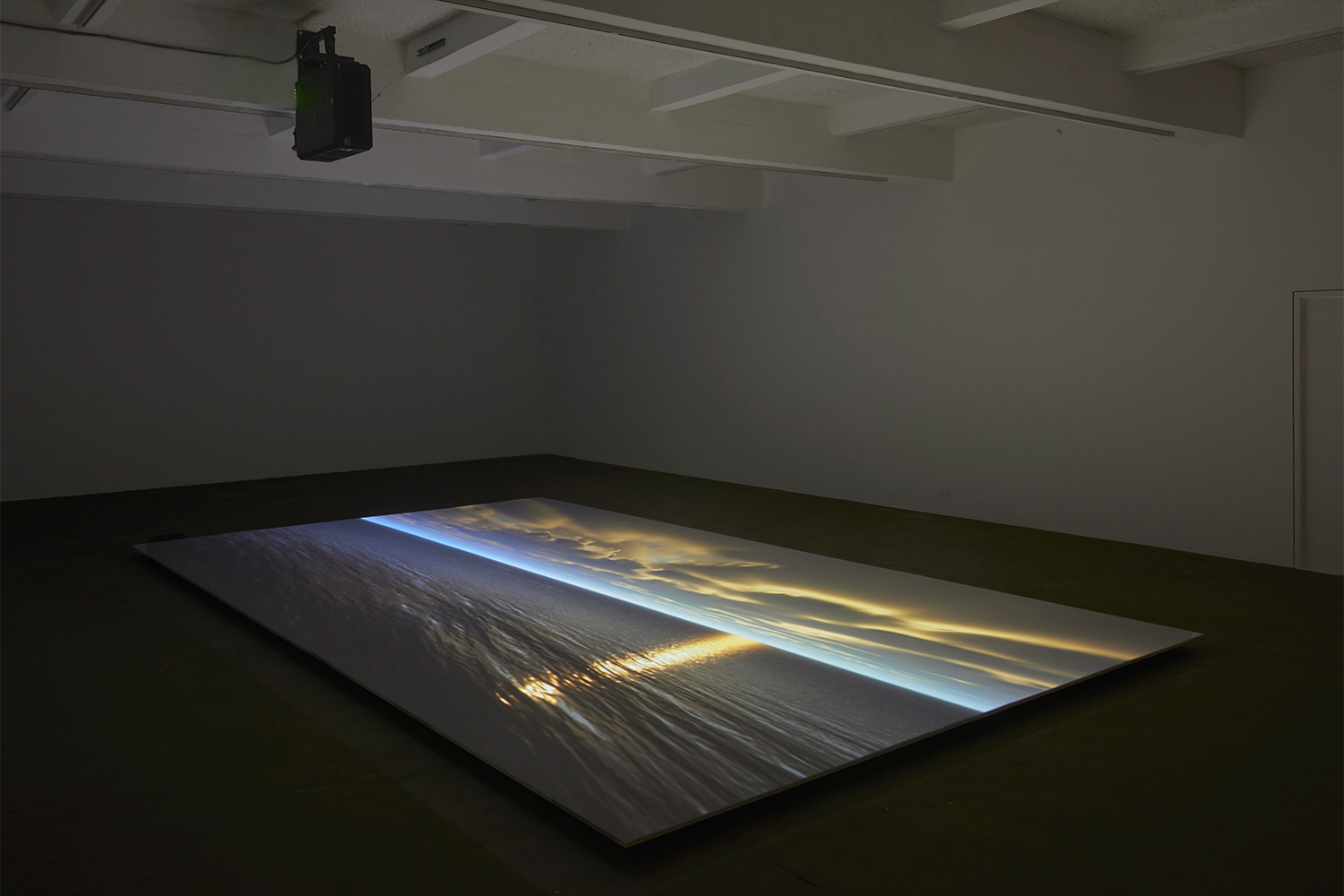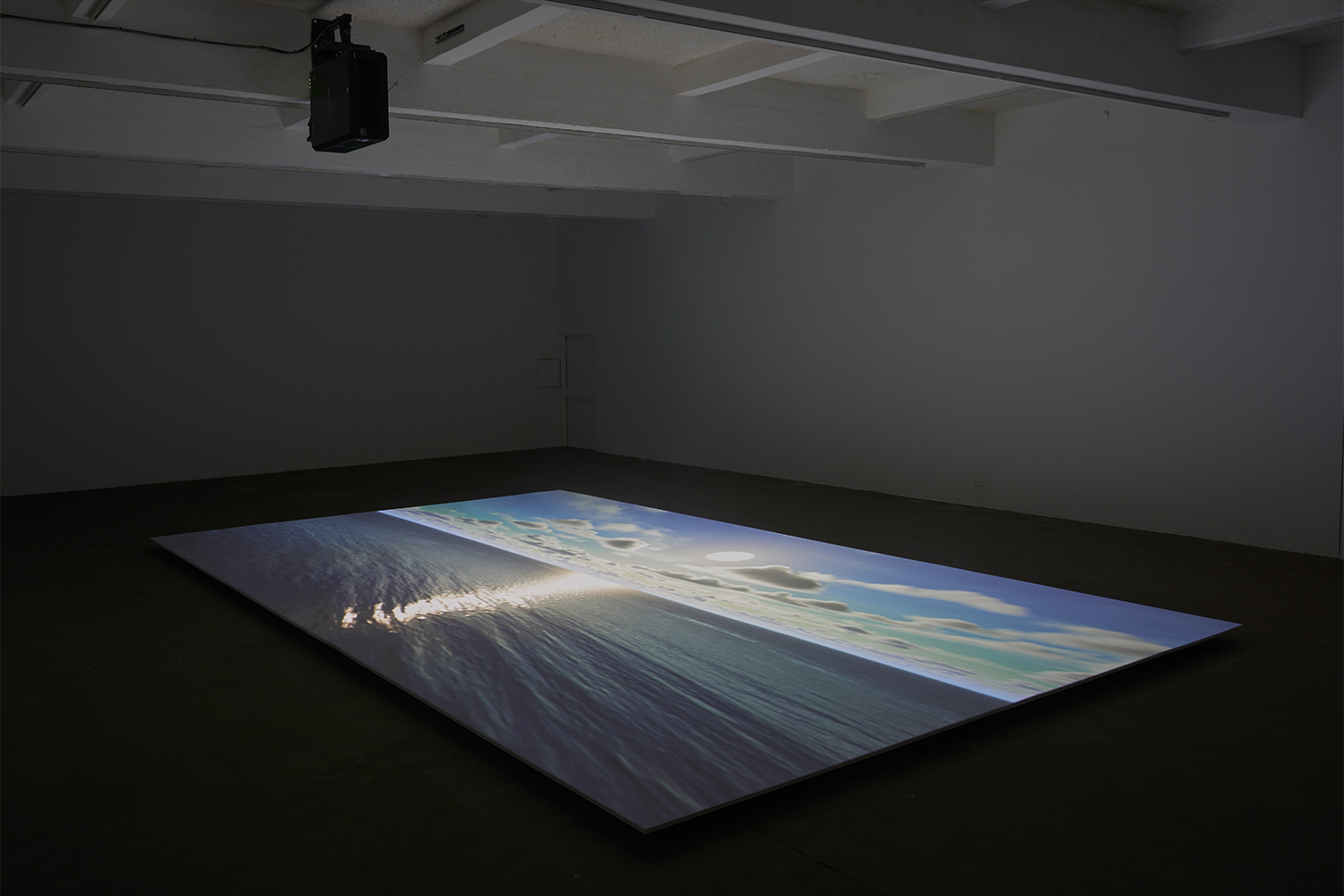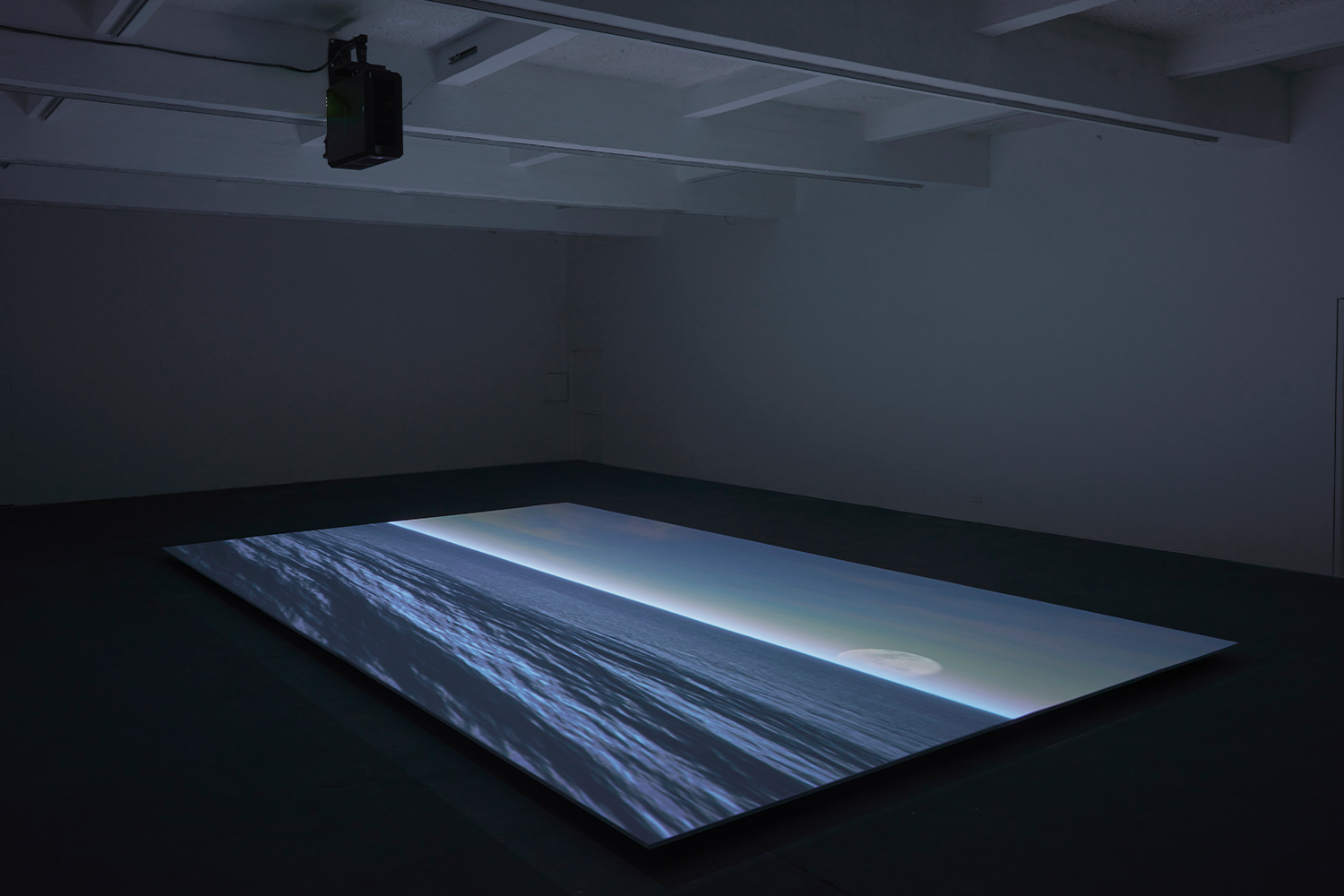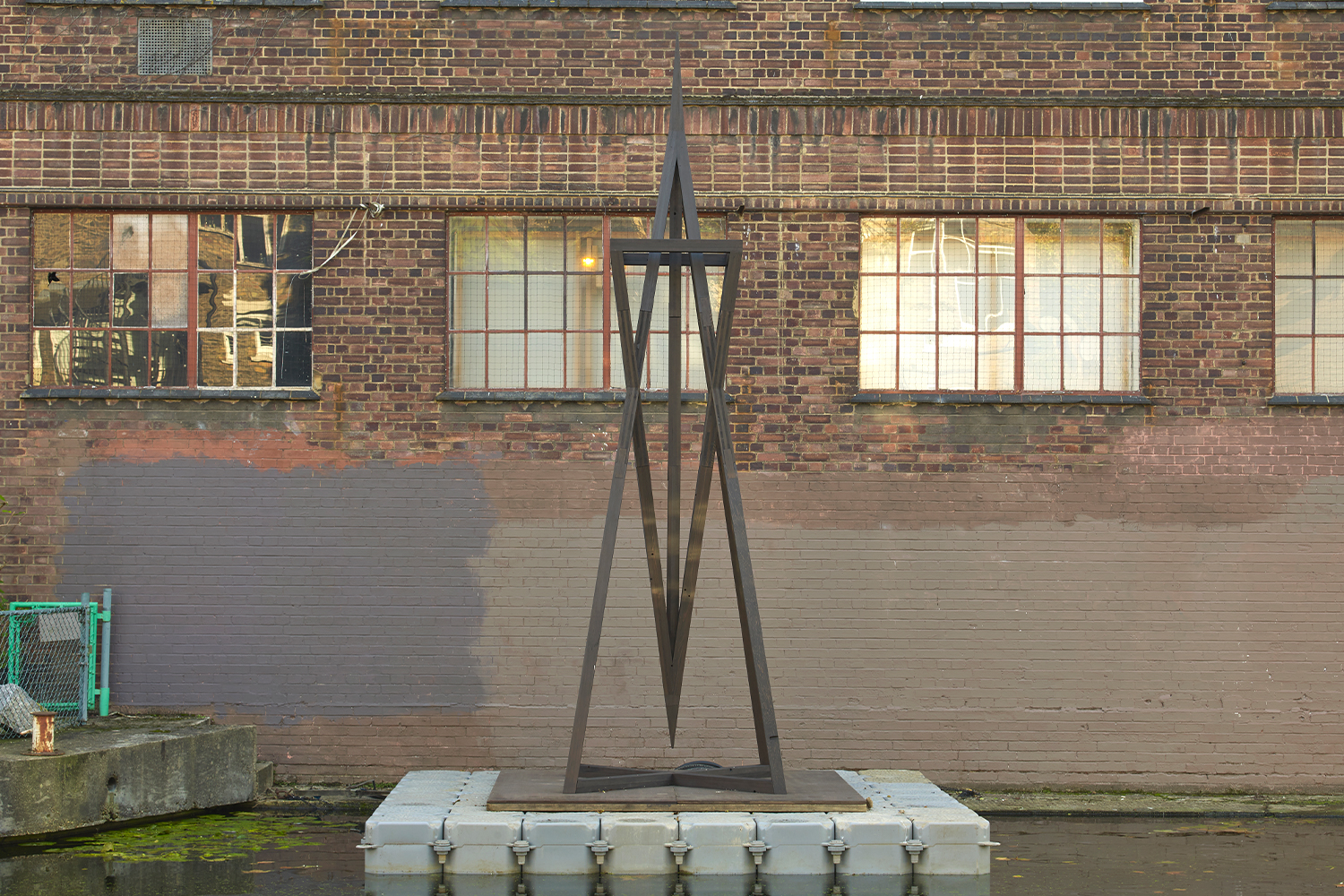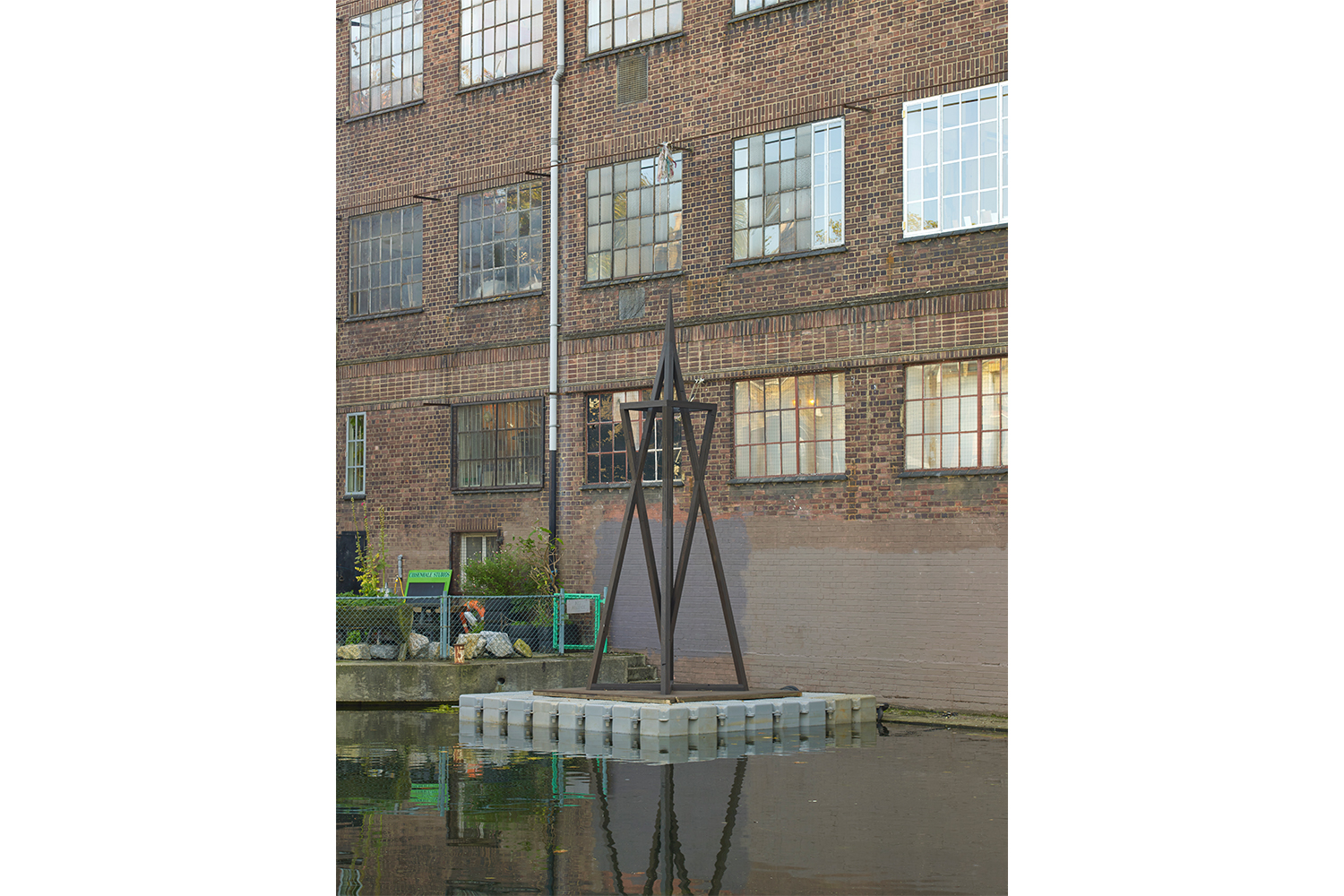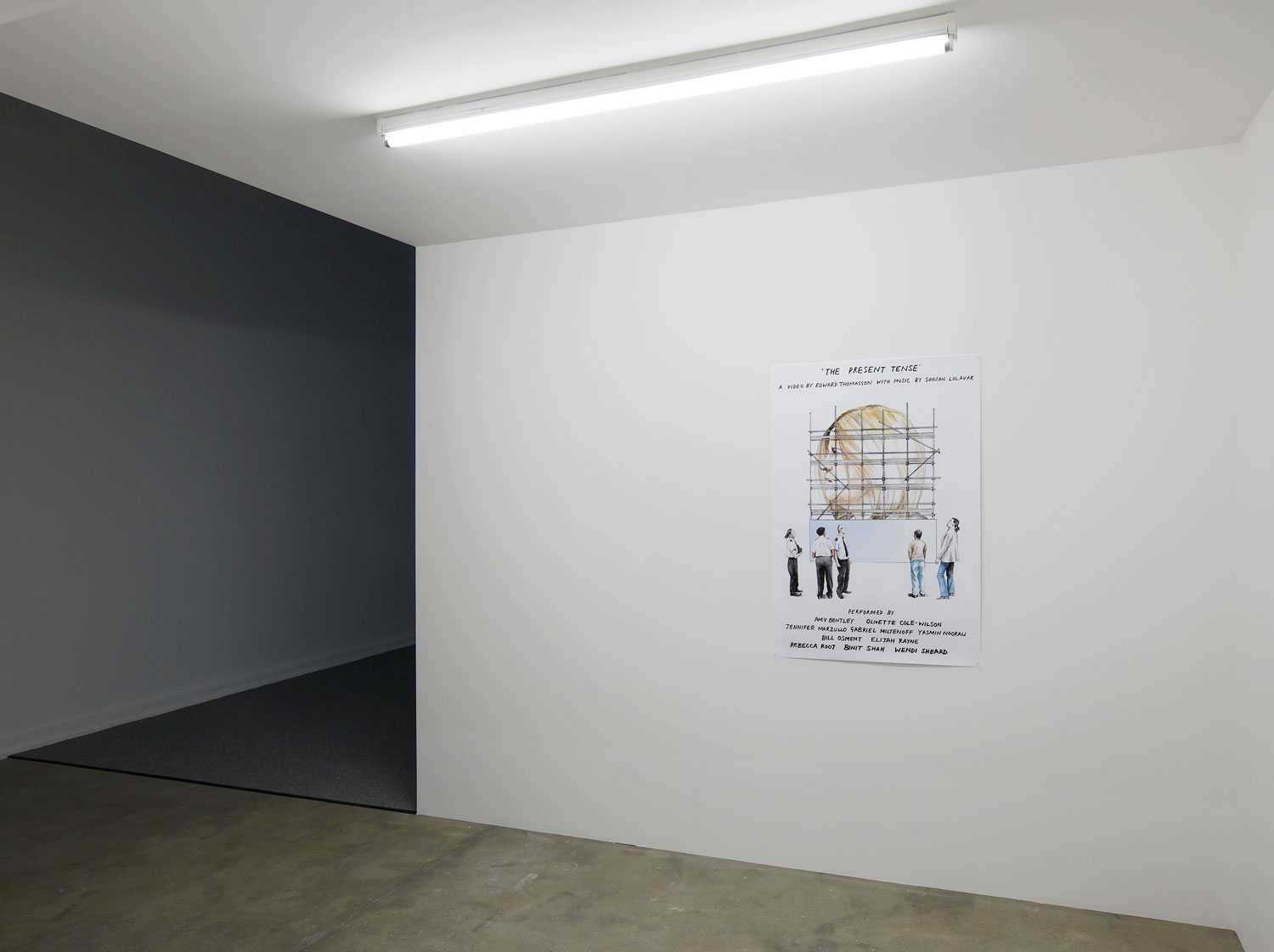There is a way of speaking that implicates a body in everything on earth. It may affirm transitory fixity where large, unfolding events leave one utterly unfixed. A similar etymological avarice permeates Rindon Johnson’s work, claiming trans, for instance, as pervious prefix: “I love the idea that anything else that is trans is also mine, because I’m trans too. There is nothing like being on a road trip and passing by all these giant trucks with ‘trans-blank,’ like ‘trans-pacific,’ ‘trans-national,’ ‘trans-air,’ ‘trans-alliance.’ All these trans, all that stuff under our name.” Prefix and preposition are relevant; their notice can claim a system for oneself. In Johnson’s exhibition “Law of Large Numbers: Our Selves,” resilience and flow inform a means to think subjectivity through scale and immensity, finding affinity with the behaviors of water.
The content of Johnson’s centerpiece is notably between the locations of the commissioning bodies for the two-fold exhibition (previously at SculptureCenter, New York, followed by Chisenhale Gallery, London). Colloquially viscous, the “cold blob” is a perpetual cooling mass within the North Atlantic Ocean — the result of ice sheets melting as the Gulf Stream current warms the waters around it. In Coeval Proposition #2: Last Year’s Atlantic, or You look really good, you look like you pretended like nothing ever happened, or a Weakening (2021), the blob is visualized via a large single-channel video projected on a raised floor, displaying live renderings of ocean weather data collected from March 2020 to January 2021. In Johnson’s attention to this portion of the Atlantic, I am reminded of Paul Gilroy’s distinction in The Black Atlantic (1993) between roots and routes — attachments either fixed to the soil of nation-states or extended across waters once forcibly travelled by migrants and slaves. This North Atlantic warming hole is thick with reaction, process itself, its sticky existence the intermediary between violently changing states. This effect is redoubled in Coeval Proposition #2 by the alternation of vertical and aerial viewpoints oscillating in a lightning flash every 180 seconds. Above the ocean’s surface, water sways rhythmically with spume shivering as draped lace. Raindrops are niveous, light is venous, everything with griseous shadow in liquid pleating of suggestive potentiality. The lateral view, contrastingly, is cut by the horizon’s fine, flat radiance.
One should not expect this work to reward sustained viewing; its bigness surpasses the body’s capacities at 8,040 hours long. The scale, then, is sensed more often than it is seen. Despite its endeavor for precise translation, everywhere — if invisible or ineffable — is deficiency and incommensurability. These absences and shortfalls are curious and integral, given the historical significance of Atlantic passage and the continually surveilled and enforced legibility of bodies-as-digits. “Bigness” is the irreconcilable and confounding as it affects at the scale of the body; its nebulous enormity is liable to confuse, and Johnson does not foreclose this destination. This weather data — in naming and reconciliation — is blatantly insufficient in translating nature, but these sets are also human observations, instants of mood. All this content is offloaded to the machine, and one hears its effortful breathing overhead to create the engineered, “live” visual, its liveness surely atemporal. The projection is uneasily received by the body, in my case with initial nausea; the presence of others offered grounding as the feeling of seeing subsumed attempts to see its dizzying entirety. What is this image, then, but a pooling of subjectivities? Nothing is total; the blob evolves.
Coeval Proposition #2’s proximity to abstraction finds resonance in the sculpture, Coeval Proposition #1: Tear down so as to make flat with the Ground or The *Trans America Building DISMANTLE EVERYTHING (2021), viewed at a distance, installed upon the Hertford Union Canal. The white quartz San Francisco edifice (also known as Pereira’s Prick) is here contracted and hollowed into a sculpture of ebonized redwood and steel to form concentric, self-sustaining pyramids, one smaller version inverted inside the larger other. The best dick, one thinks, is the one that receives itself, or better yet, is not there at all.
The titular law of Johnson’s exhibition is a financial concept in which a company’s exponential economic growth must cede in pace — its unsustainable expansion the catalyst for predicted breakdown. One cannot help but view this ocean hole similarly, as an impossible sight composed of very real cannibalistic behaviors. Yet Johnson’s relation with water reflects more intimate concerns of transition and translation, circumscribing and situating the self as inestimable life, ever and uneasily coeval.

